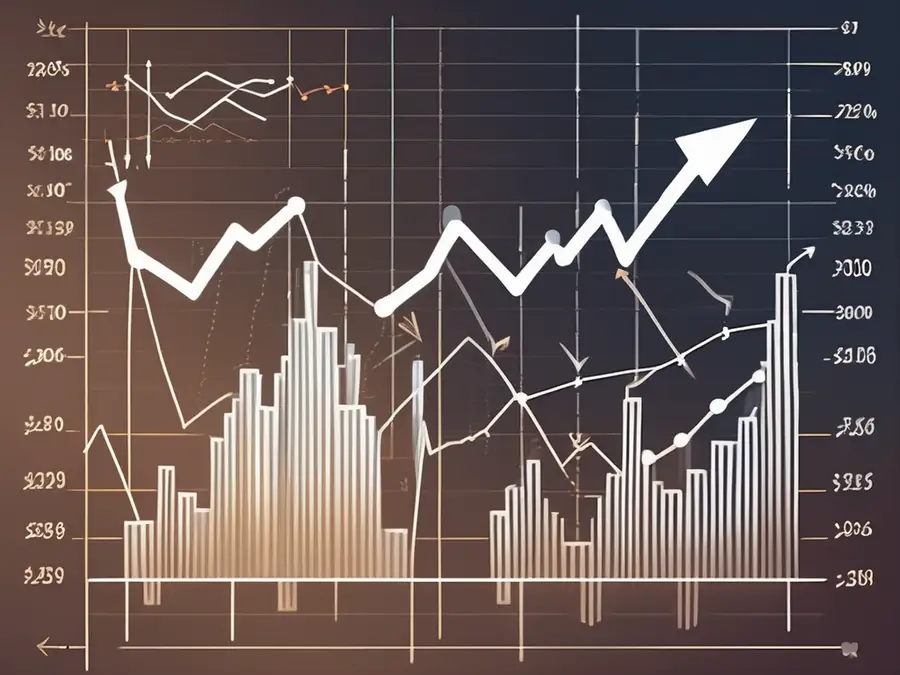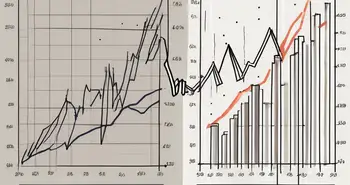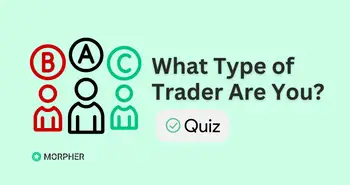A Guide on How to Trade CFDs

Welcome to my comprehensive guide on how to trade Contracts for Difference (CFDs). In this article, I'll provide you with an in-depth understanding of CFDs, essential tools for trading, how to develop a trading strategy, and the step-by-step process of executing a CFD trade. Whether you're a beginner looking to enter the world of CFD trading or an experienced trader seeking to enhance your skills, this guide is for you.
Understanding CFDs: An Overview
Let's start by understanding what CFDs are and how they work.
CFDs, or Contracts for Difference, are derivative products that allow traders to speculate on price movements of various financial instruments, such as stocks, commodities, indices, or currencies, without owning the underlying asset. When trading CFDs, you enter into a contract with a broker, agreeing to exchange the difference in the asset's price from the time the contract is opened until it is closed.
CFD trading has gained popularity in recent years due to its flexibility and accessibility. Unlike traditional investing, CFDs offer the opportunity to profit from both rising and falling markets. This means that traders can take advantage of market volatility and potentially generate returns in any market condition.
The Mechanics of CFD Trading
When trading CFDs, you can go long (buy) if you believe the price will rise, or go short (sell) if you expect the price to fall. The main advantage of CFDs is leverage, which allows traders to control larger positions with a smaller investment, amplifying both potential profits and losses.
Let's say you want to trade a CFD on a stock. If you believe the stock's price will increase, you can go long by buying the CFD. If the price does indeed rise, you can sell the CFD at a higher price and make a profit. On the other hand, if you expect the stock's price to decrease, you can go short by selling the CFD. If the price falls as anticipated, you can buy back the CFD at a lower price and profit from the difference.
Benefits and Risks of CFD Trading
CFD trading offers several benefits, such as flexibility, access to a wide range of markets, and the ability to profit from both rising and falling markets. Traders can choose from a variety of financial instruments, including stocks, commodities, indices, and currencies, allowing them to diversify their portfolios and take advantage of different market trends.
However, it's important to understand the risks involved in CFD trading. Leverage can magnify losses, and if market conditions are unfavorable, you may lose more than your initial investment. It's crucial to have a solid risk management strategy in place and to carefully consider your trading decisions.
In addition, CFD trading involves costs such as spreads, commissions, and overnight financing charges. These costs can impact your overall profitability, so it's important to factor them into your trading plan.
Overall, CFD trading can be a powerful tool for traders looking to diversify their portfolios and take advantage of market opportunities. However, it's essential to approach it with caution, understanding the mechanics of CFD trading and the potential risks involved.
Essential Tools for CFD Trading
Before diving into CFD trading, it's crucial to have the right tools at your disposal. Let's explore some additional tools that can enhance your trading experience and increase your chances of success.
Trading Platforms
A reliable and user-friendly trading platform is essential for executing trades. Look for a platform that offers real-time market data, advanced charting tools, and order execution capabilities. It should also provide access to a wide range of financial instruments and be compatible with your trading style.
Furthermore, consider platforms that offer additional features like social trading, where you can follow and copy the trades of successful traders. This can be a valuable learning tool, especially for beginners, as it allows you to gain insights from experienced traders and potentially replicate their success.
Analytical Tools
To make informed trading decisions, you'll need access to analytical tools, such as technical indicators, market news, and economic calendars. These tools can help you identify trends, analyze price patterns, and make predictions about future price movements.
Moreover, some trading platforms offer advanced charting packages that allow you to customize your charts with various indicators and drawing tools. This can help you develop and test your trading strategies, as well as visually analyze price movements with greater precision.
Risk Management Tools
Risk management is crucial in CFD trading. Make use of stop-loss orders to limit potential losses and take-profit orders to secure profits. Additionally, consider using risk management tools like trailing stops and guaranteed stop-loss orders offered by some brokers to further protect your capital.
Furthermore, it's important to have a clear risk management plan in place. This includes determining your risk tolerance, setting realistic profit targets, and diversifying your portfolio. By implementing these risk management tools and strategies, you can minimize potential losses and maximize your chances of long-term success in CFD trading.
As you can see, having the right tools at your disposal is essential for successful CFD trading. By utilizing reliable trading platforms, analytical tools, and risk management strategies, you can enhance your trading experience and increase your chances of achieving your financial goals.
Developing a CFD Trading Strategy
Having a well-defined trading strategy is essential for success in CFD trading.
Understanding Market Trends
Before entering any trade, it's important to analyze the market trends. Study price charts, identify support and resistance levels, and look for patterns that indicate potential price movements. Understanding market trends will help you make more accurate predictions and increase your chances of success.
Setting Your Trading Goals
Setting clear trading goals is crucial for developing a trading strategy. Determine your risk tolerance, define your desired return on investment, and establish realistic expectations. This will help you stay focused, disciplined, and objective in your trading decisions.
Risk Management in CFD Trading
Implementing effective risk management techniques is vital in CFD trading. Never risk more than you can afford to lose, diversify your investment, and constantly monitor the market. Remember, preserving your capital is as important as making profits.
Executing a CFD Trade
Now that you have a solid understanding of CFDs and have laid the foundation for successful trading, let's walk through the process of executing a CFD trade.
Choosing the Right CFD
Select a financial instrument that aligns with your trading strategy and goals. Consider factors such as liquidity, volatility, and the asset's correlation to other markets. Conduct thorough research and analysis to identify potential opportunities.
Opening a Position
Once you've chosen the asset, it's time to open a position. Specify the size of your position, set stop-loss and take-profit levels to manage risk, and decide whether you want to go long or short. Keep a close eye on the market and be prepared to adjust your position if necessary.
Monitoring and Closing Your Position
After opening a position, continuously monitor the market and evaluate the ongoing performance of your trade. If the price moves as expected and reaches your profit target, consider closing the position to lock in your gains. Conversely, if the market turns against you, don't hesitate to close the position to limit losses.
Trading CFDs can be a rewarding venture, but it requires a deep understanding of the markets and disciplined execution of a well-thought-out trading strategy. With practice and perseverance, you can become a successful CFD trader.
As a seasoned trader myself, I remember when I first started trading CFDs. It was a rollercoaster ride of excitement and uncertainty. But over time, I learned the importance of patience, discipline, and continuous learning. Now, I trade with confidence and consistently achieve my trading goals.
Frequently Asked Questions
What are CFDs?
CFDs are derivative products that allow traders to speculate on the price movements of various financial instruments without owning the underlying asset.
What tools do I need for CFD trading?
Essential tools for CFD trading include a reliable trading platform, analytical tools, and risk management tools.
How do I develop a CFD trading strategy?
Developing a trading strategy involves understanding market trends, setting clear trading goals, and implementing effective risk management techniques.
How do I execute a CFD trade?
To execute a CFD trade, choose the right CFD, open a position, and closely monitor and manage the trade until it is closed.
Remember, CFD trading involves risks, and it's crucial to educate yourself and seek professional advice before diving into this realm. Happy trading!
Ready to take your CFD trading to the next level with a platform that's as innovative as your strategy? Discover Morpher, the revolutionary trading platform that leverages blockchain technology to offer zero fees, infinite liquidity, and a unique trading experience. Whether you're interested in stocks, cryptocurrencies, forex, or even niche markets like NFTs, Morpher provides the tools for fractional investing, short selling without interest fees, and up to 10x leverage. Sign up now to experience the future of trading and receive your Free Sign Up Bonus. Your journey towards democratized, cutting-edge investing starts here!

Disclaimer: All investments involve risk, and the past performance of a security, industry, sector, market, financial product, trading strategy, or individual’s trading does not guarantee future results or returns. Investors are fully responsible for any investment decisions they make. Such decisions should be based solely on an evaluation of their financial circumstances, investment objectives, risk tolerance, and liquidity needs. This post does not constitute investment advice.

Painless trading for everyone
Hundreds of markets all in one place - Apple, Bitcoin, Gold, Watches, NFTs, Sneakers and so much more.

Painless trading for everyone
Hundreds of markets all in one place - Apple, Bitcoin, Gold, Watches, NFTs, Sneakers and so much more.









